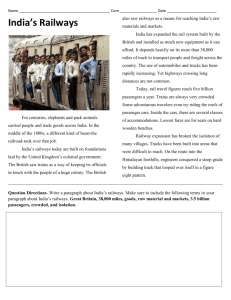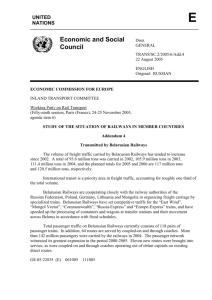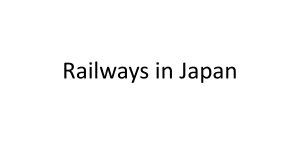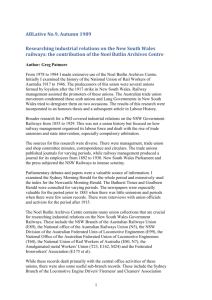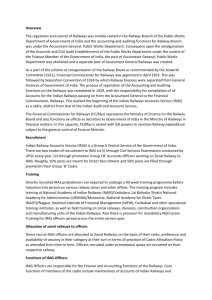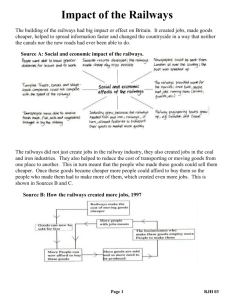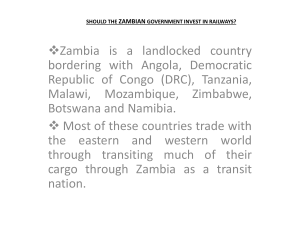Railway age notes
advertisement
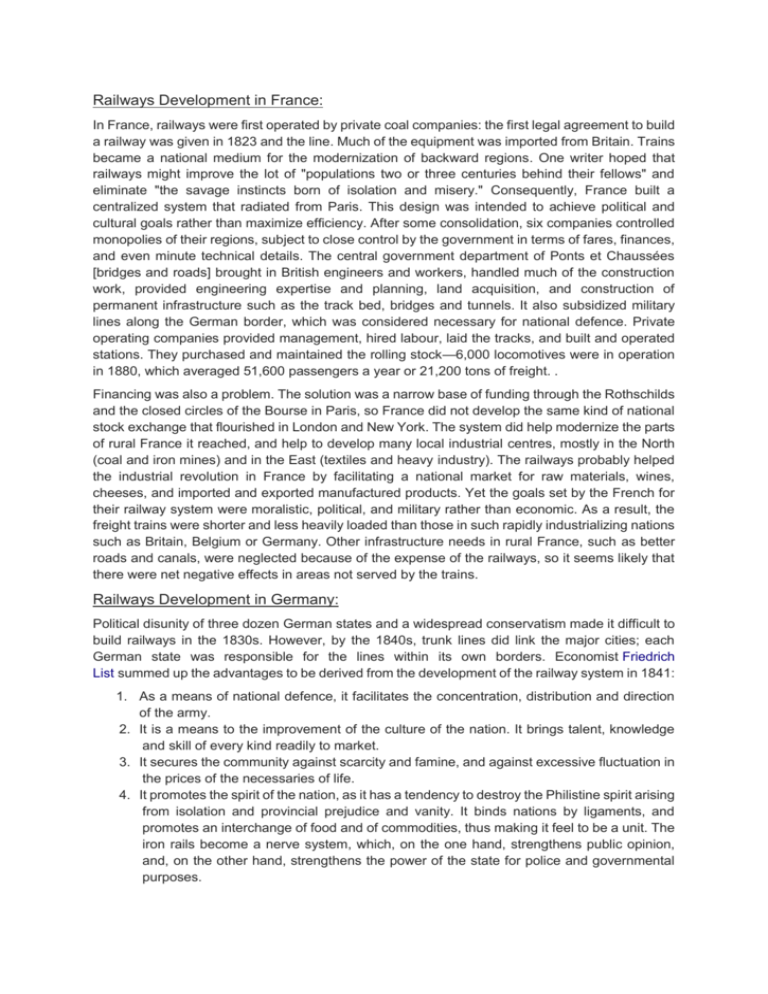
Railways Development in France: In France, railways were first operated by private coal companies: the first legal agreement to build a railway was given in 1823 and the line. Much of the equipment was imported from Britain. Trains became a national medium for the modernization of backward regions. One writer hoped that railways might improve the lot of "populations two or three centuries behind their fellows" and eliminate "the savage instincts born of isolation and misery." Consequently, France built a centralized system that radiated from Paris. This design was intended to achieve political and cultural goals rather than maximize efficiency. After some consolidation, six companies controlled monopolies of their regions, subject to close control by the government in terms of fares, finances, and even minute technical details. The central government department of Ponts et Chaussées [bridges and roads] brought in British engineers and workers, handled much of the construction work, provided engineering expertise and planning, land acquisition, and construction of permanent infrastructure such as the track bed, bridges and tunnels. It also subsidized military lines along the German border, which was considered necessary for national defence. Private operating companies provided management, hired labour, laid the tracks, and built and operated stations. They purchased and maintained the rolling stock—6,000 locomotives were in operation in 1880, which averaged 51,600 passengers a year or 21,200 tons of freight. . Financing was also a problem. The solution was a narrow base of funding through the Rothschilds and the closed circles of the Bourse in Paris, so France did not develop the same kind of national stock exchange that flourished in London and New York. The system did help modernize the parts of rural France it reached, and help to develop many local industrial centres, mostly in the North (coal and iron mines) and in the East (textiles and heavy industry). The railways probably helped the industrial revolution in France by facilitating a national market for raw materials, wines, cheeses, and imported and exported manufactured products. Yet the goals set by the French for their railway system were moralistic, political, and military rather than economic. As a result, the freight trains were shorter and less heavily loaded than those in such rapidly industrializing nations such as Britain, Belgium or Germany. Other infrastructure needs in rural France, such as better roads and canals, were neglected because of the expense of the railways, so it seems likely that there were net negative effects in areas not served by the trains. Railways Development in Germany: Political disunity of three dozen German states and a widespread conservatism made it difficult to build railways in the 1830s. However, by the 1840s, trunk lines did link the major cities; each German state was responsible for the lines within its own borders. Economist Friedrich List summed up the advantages to be derived from the development of the railway system in 1841: 1. As a means of national defence, it facilitates the concentration, distribution and direction of the army. 2. It is a means to the improvement of the culture of the nation. It brings talent, knowledge and skill of every kind readily to market. 3. It secures the community against scarcity and famine, and against excessive fluctuation in the prices of the necessaries of life. 4. It promotes the spirit of the nation, as it has a tendency to destroy the Philistine spirit arising from isolation and provincial prejudice and vanity. It binds nations by ligaments, and promotes an interchange of food and of commodities, thus making it feel to be a unit. The iron rails become a nerve system, which, on the one hand, strengthens public opinion, and, on the other hand, strengthens the power of the state for police and governmental purposes. Lacking a technological base at first, the Germans imported their engineering and hardware from Britain, but quickly learned the skills needed to operate and expand the railways. In many cities, the new railway shops were the centres of technological awareness and training, so that by 1850, Germany was self-sufficient in meeting the demands of railroad construction, and the railways were a major impetus for the growth of the new steel industry. Observers found that even as late as 1890, their engineering was inferior to Britain’s. However, German unification in 1870 stimulated consolidation, nationalisation into state-owned companies, and further rapid growth. Unlike the situation in France, the goal was support of industrialisation, and so heavy lines crisscrossed the Ruhr and other industrial districts, and provided good connections to the major ports of Hamburg and Bremen. By 1880, Germany had 9,400 locomotives pulling 43,000 passengers and 30,000 tons of freight a day, and forged ahead of France. Adapted from https://en.wikipedia.org/wiki/History_of_rail_transport#France

